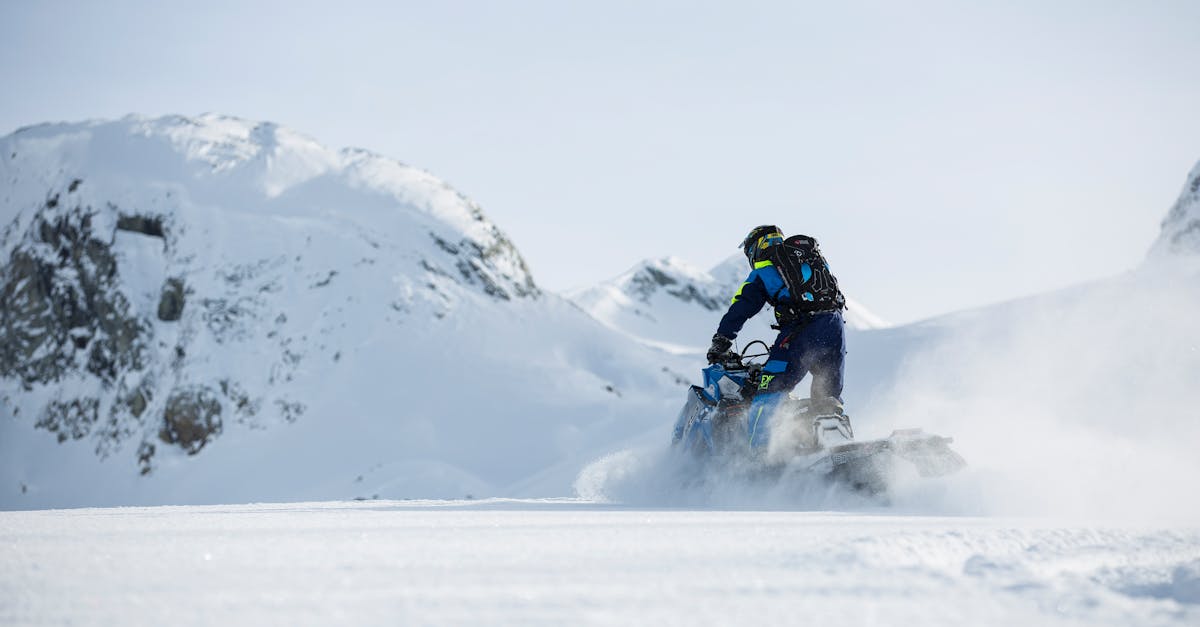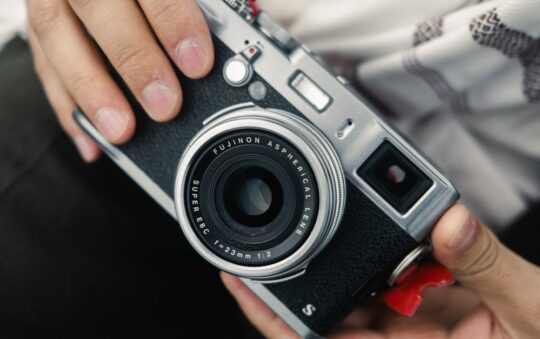Have you ever hit the slopes and wondered if you could protect your head without very costly? I’ve been there—searching for a ski helmet that’s safe, stylish, and won’t empty my wallet. The good news is you don’t have to compromise quality for price.
In this text, I’ll share my top picks for ski helmets under $100 that offer solid protection and comfort. Whether you’re a beginner or just need a reliable backup, these affordable options prove you can stay safe without splurging. Let’s jump into the best budget-friendly helmets that keep you covered on every run.
Overview of Under $100 Ski Helmets
Finding a ski helmet that keeps you safe without emptying your wallet can feel like hunting for a unicorn. But I’ve discovered plenty of options under $100 that do just that—offer solid protection while staying budget-friendly.
When I say “under $100,” I’m talking helmets that balance essential safety features with comfort and style. These helmets won’t have every high-tech gadget out there, but they meet industry safety standards like ASTM F2040 and CE EN1077, which means they’ve been put through tests ensuring they can handle the kind of impacts you’d expect on the slopes.
Why these helmets hold their own:
- Basic safety certifications: These are your helmet’s green light to keep your head protected. They show the helmet passed crash simulations and material strength evaluations.
- Lightweight construction: Many models use materials like expanded polystyrene (EPS) foam, which cushions your head by absorbing shock while keeping the helmet light enough not to weigh you down.
- Ventilation systems: Some helmets in this price range include simple vents that help prevent overheating without adding complexity.
- Adjustable fit: You’ll often find dial-fit systems or adjustable straps here, which is crucial for comfort and safety—nothing worse than a helmet that slides mid-run.
Still, helmets under $100 might have fewer bells and whistles than pricier options. Features like integrated audio or MIPS (Multi-directional Impact Protection System) are usually missing. But if you’re new to skiing or need a reliable backup helmet, these basics go a long way.
Here’s how these helmets fit into everyday ski life:
- Perfect for beginners and casual skiers: Not hitting the black diamonds? These helmets offer solid protection when you’re learning or taking a leisurely glide.
- Great as loaner helmets: If you’re hosting ski buddies or teaching kids, having a few budget helmets on hand means nobody’s left unprotected.
- Backup gear that doesn’t expensive: Even as a seasoned skier, I keep a spare helmet for freestyle sessions or guest use. It’s peace of mind without stressing finances.
Quick tips to keep in mind when shopping under $100:
- Look for helmets with clear certification labels—they are your safety assurance.
- Try the helmet on before buying if possible. Small comfort tweaks make a big difference on the slopes.
- Check if the helmet has adjustable vents or fit systems. These help keep you comfy as temperature and activity levels change.
- Remember that pricing isn’t always a direct reflection of safety. Many budget helmets meet rigorous standards.
I’ve seen firsthand how helmets in this price range can protect heads without making skiers compromise on fit or feel. So if you’re budget-conscious but safety-focused, these helmets provide a solid place to start.
Features and Specifications
Choosing a ski helmet under $100 doesn’t mean you have to settle for less. These budget-friendly helmets pack plenty of features that keep you comfortable and safe on the slopes without emptying your wallet. Here’s what I look for when sizing up these affordable picks.
Material Quality
One thing I noticed right away is that many helmets in this price range use EPS foam for impact absorption. EPS, or Expanded Polystyrene, is a lightweight material that cushions your head during falls by compressing on impact. It’s the most common foam inside helmets and does a solid job.
The outer shell is typically made from ABS plastic or polycarbonate — both sturdy choices that resist scratches and small hits. While you won’t find premium carbon fiber on these helmets (and honestly, that’s okay), the materials used strike a good balance between durability and cost.
Pro tip: Look for helmets with a smooth finish and sturdy feel when you hold them. This often shows better build quality than rough edges or flimsy plastic.
Safety Certifications
I trust helmets that carry safety certifications because they’ve been tested for real-world impact standards. The most common you’ll find on under-$100 helmets are ASTM F2040 (standard in the US) and CE EN1077 (European standard). Both ensure the helmet can withstand forces from falls and collisions.
Here’s a quick sheet to keep in mind:
| Certification | Description | What It Means For You |
|---|---|---|
| ASTM F2040 | US testing standard | Helmet meets impact and penetration safety |
| CE EN1077 | European safety standard | Meets tough European safety and quality checks |
If you spot these labels, you’re in safe territory—even if the helmet looks simple or basic.
Ventilation and Comfort
Ski helmets that cost less than $100 often include vents to keep your head cool but don’t go overboard. I found models with adjustable vents are a rare but valuable find here. Being able to open or close vents depending on weather or activity level means fewer sweaty moments on chillier days.
Inside padding is usually soft and removable for washing — a lifesaver when you spend hours crushing it on the slopes or even just commuting with your helmet. Just remember that thicker padding can affect fit, so try on a few sizes if you can.
Fit and Adjustability
Fit is king when it comes to any helmet. Most helmets under $100 offer adjustable dial-fit systems or basic straps with clip buckles. The dial-fit is my favorite because it allows micro-adjustments for a snug but comfy feel. Straps should be easy to fasten and not pinch your chin or ears.
Here’s my quick checklist for fit:
- Helmet sits level on the head (not tilted back)
- Straps snug but don’t choke
- No uncomfortable pressure spots
- Adjustable sizing dial or straps help get that just-right feel
Remember, you want the helmet secure enough to stay on during any wipeouts but comfortable enough to forget it’s there.
Additional Features
Some budget helmets throw in extras you might not expect. Here are a few that caught my eye:
- Goggle Clips: Keeps your goggles locked in place — no more foggy escapes!
- Audio Compatibility: Built-in ear pads that fit headphones or speakers so you can jam to tunes safely.
- Removable Liners: Makes cleaning easier and keeps things fresh season after season.
- Multiple Color Options: Because looking good on the mountain matters as much as staying safe (trust me).
At this price point, don’t expect all bells and whistles but look for at least a couple of these extras if they matter to you. They can definitely enhance the all-day wear experience.
Finding a ski helmet under $100 that fits well, offers proper safety, and feels comfortable is absolutely doable. Pay attention to these features and specs and you’ll be set to enjoy the slopes without worry or extra expense.
Performance and User Experience
Choosing a ski helmet under $100 means balancing safety, comfort, and everyday usability. I’ve found these helmets do a solid job keeping you protected without adding extra hassle to your slope day.
Protection and Durability
When I strapped on these budget-friendly helmets, the first thing I looked for was that they met basic safety standards like ASTM F2040 or CE EN1077. These certifications mean your helmet can handle impacts typical of skiing accidents, which is a must-have.
Many helmets in this price range use EPS foam to absorb shocks. Think of EPS like the mattress of helmet materials — it cushions your head during a fall. The outer shell is usually ABS plastic or polycarbonate. That outer layer is your armor against scrapes and bumps.
It’s worth noting though that these helmets might not have extra reinforcements found in pricier options, but they still offer solid day-to-day durability if you treat them right. A tip? Always store your helmet in a padded bag to avoid cracks or unwelcome dents.
Comfort During Skiing
Wearability matters. If a helmet feels like a rock on your head, your focus may slip when carving down icy slopes.
I noticed many helmets under $100 come with adjustable fit systems using dials or straps, making it easier to get a snug yet comfortable fit. Inside padding is often removable and washable — a lifesaver when you’re skiing multiple days or sharing helmets with family.
Ventilation is where budget helmets can get tricky. Most offer simple vent designs which keep air flowing enough to prevent overheating during hard runs but might not be as customizable as higher-end models. I recommend trying a helmet on with your winter hat to get a feel for breathability before a big day out.
Weight and Balance
You want your helmet to feel like part of you, not a separate burden. These helmets commonly weigh between 14 to 18 ounces (roughly 400 to 500 grams). That’s light enough to keep your neck free of strain yet sturdy enough to meet safety needs.
I’ve found helmets with balanced weight distribution make a difference during long ski sessions. It’s not just about how light a helmet is but how the weight sits on your head. Features like integrated fit adjustments can help get this balance right.
Compatibility with Goggles and Accessories
Here’s the kicker — your helmet needs to play nice with your goggles and any extras you like to carry.
Most budget helmets have built-in goggle clips or straps to keep your goggles secure during fast runs or chairlift rides (because losing goggles mid-slope is nobody’s idea of fun). Some even offer extra padding around ear covers to prevent fogging and improve warmth.
While audio compatibility is rarer at this price, a few models do provide groove spaces that let you add headphones if you’re into skiing with tunes.
Quick Tips to Maximize Your $100 Helmet
- Check certifications like ASTM or CE to confirm safety compliance
- Try on helmets with your goggles to ensure seamless fit
- Adjust fit dials or straps for comfortable snugness without pressure
- Look for removable padding for easy cleaning after sweaty days
- Store helmets away from extreme heat to prolong lifespan
Skiing can get intense, but having a reliable helmet that fits well and keeps you safe should not add stress. These budget picks prove you don’t have to spend big to get solid protection and everyday comfort on the slopes.
Pros of Under $100 Ski Helmets
When I first started skiing, I hesitated to spend big on gear. But I quickly learned you don’t have to empty your wallet to stay safe on the slopes. Helmets under $100 come with plenty of perks that make them a smart pick for many skiers.
Safety that Meets Standards
First off, these helmets meet essential safety certifications like ASTM F2040 and CE EN1077. That means they’re tested to absorb impacts properly. They use classic EPS foam inside—a lightweight material that cushions your head during a fall. So even if the price tag looks low, you’re still getting reliable protection.
Comfort That Keeps You Going
I appreciate how some budget helmets don’t scrimp on comfort. Many models feature adjustable fit systems—you know, those little dials and straps that make it easy to get the helmet snug without feeling like a vice. A helmet that fits well means you can wear it for hours without fussing with it (which, trust me, is easier than it sounds). Plus, removable padding means you can keep the helmet fresh after a sweaty day on the slopes.
Ventilation Without the Drama
Overheating can quickly ruin a ski day. Luckily, many helmets under $100 come with basic ventilation channels that let some air flow without letting in the cold. This strikes a neat balance—it keeps your head cool enough, but still warm, even when the temps dip.
Lightweight Build for Longer Days
Some budget helmets weigh surprisingly less than heavier-duty models. Lightweight helmets mean less neck strain when you’re skiing all day. I’ve had days where my older, heavier helmet made my head ache by afternoon. With lighter gear, I stay comfortable longer and can actually focus on skiing instead of my aching neck.
Style and Functionality, Side by Side
You don’t have to settle for clunky or boring when shopping below $100. Plenty of these helmets come in sharp styles and colors that stand out on the mountain. Some even offer handy extras like goggle clips or audio compatibility. These features might seem small, but they add up to a smoother, more enjoyable day out.
Ideal for Beginners and Backup Use
If you’re just starting out, or if you need a backup helmet for a friend, these affordable options make sense. They won’t overwhelm you with features you don’t need, and they still deliver solid protection. From my own group of ski buddies, I’ve seen plenty choose budget helmets for casual days or last-minute gear swaps—and feel perfectly secure.
Quick Tips for Picking the Right One:
- Look for clear safety certification labels inside the helmet.
- Try it on with your ski goggles to check the fit.
- Choose a helmet with adjustable fit mechanisms.
- Opt for removable and washable padding if you tend to sweat.
- If you like music or phone calls on the slopes, see if it supports audio accessories.
So yeah, helmets under $100 are not just about saving money. They offer practical, everyday benefits that can fit well into a skier’s routine—without compromising the essentials of safety, comfort, and style.
Cons of Under $100 Ski Helmets
Choosing a ski helmet on a tight budget means balancing safety and price. While helmets under $100 often deliver solid basic protection (which is great for beginners or casual skiers like me), there are a few bumps to be aware of before you buy.
Limited Advanced Features
One of the first things you’ll notice is that these helmets usually lack the bells and whistles found on pricier models. Things like built-in audio systems or adjustable ventilation zones are often missing or quite basic. For example, I’ve tried budget helmets where the vents don’t adjust much which can leave you feeling too hot or too cold depending on the day.
Simpler Construction Materials
Under $100 helmets often use EPS foam for impact absorption paired with an ABS plastic shell. While this combo meets essential safety standards, it may not always offer the same durability or shock absorption in multiple impacts that pricier helmets with MIPS (Multi-directional Impact Protection System) or higher-grade materials provide. So if you tend to ski aggressively or on difficult slopes, this is something to keep in mind.
Fit and Comfort Trade-Offs
Comfort is king when you’re out on the slopes all day, and let me tell you, some budget helmets can feel a little snug or less adjustable. Usually, the adjustment mechanisms are basic dial-fit systems or simple straps without extra padding or custom mold options. A helmet that doesn’t sit quite right can easily become a distraction or sore point after a few hours.
Style and Customization
If you’re picky about style or want a helmet that really stands out with unique colors or graphics, you might find your choices limited. Many under-$100 helmets stick to classic or generic looks so customizing your gear to reflect your personality takes a back seat.
Durability Concerns Over Time
While these helmets are fine for occasional use (like weekend trips or occasional outings), they may wear faster if you ski multiple days in a row or store them roughly. Padding might compress quicker, and the shell could show scratches or dents easier compared to higher-end helmets made with tougher materials.
Things to Keep in Mind
- Ventilation might be basic and less flexible.
- Comfort adjustments could be less precise.
- Safety features like MIPS are rarely included.
- Style selections are often standard.
- Durability might dip with heavy use.
From my experience and chats with fellow skiers, these drawbacks don’t mean you can’t get a great helmet on a budget. It just means you get the essentials while skipping some fancy extras. If you mostly ski for fun or need a solid backup helmet, these trade-offs often don’t feel like deal-breakers. Just make sure you try on a few models to find the best fit and test the airflow so you don’t end up overheating or feeling squeezed halfway through your ski day.
Comparison with Higher-Priced Ski Helmets
Choosing a ski helmet under $100 means making some trade-offs compared to pricier models. Still, these budget-friendly helmets hold their own in many ways. Here’s how they stack up and what to expect if you’re considering whether to spend more.
Differences in Safety and Materials
When it comes to safety, helmets across all price points usually meet essential certifications like ASTM F2040 or CE EN1077. That means whether you buy a budget model or a premium one, basic impact protection is guaranteed.
But, the materials tell a different story. Under $100 helmets often rely on traditional EPS foam for shock absorption and durable plastics like ABS or polycarbonate for the shell. Don’t get me wrong — these materials do the job well enough for most skiers. But pricier helmets might use advanced materials such as dual-density foam or include special layering systems like MIPS (Multi-directional Impact Protection System) that help reduce rotational forces during a fall.
Think of it like comparing a trusty sedan to a sports car. Both get you there safely, but the sports car has extra engineering for smoother handling in tricky turns. For most weekend skiers and beginners, that extra layer is less critical than a snug fit and comfort.
Feature Set Comparison
Budget helmets usually keep things simple. You’ll find adjustable fit systems that work fine, ventilation channels that help air flow to prevent overheating, and handy extras like goggle clips or audio compatibility.
Higher-priced helmets often go beyond this baseline with features that might seem like small luxuries but add comfort on long days. Things like multiple adjustable vents, removable liners that dry quickly, built-in audio systems, and super-precise fit adjustments set those models apart.
That said, I’ve found that unless you’re skiing every day or tackling extreme conditions, these extras can feel more like nice bonuses rather than necessities. Remember, a cozy fit and basic venting make a huge difference when you’re out there enjoying fresh powder.
Value for Money
Here’s where budget helmets really shine. For under $100, you get a helmet that ticks all the boxes for safety and comfort for most riders without emptying your wallet.
If you’re a casual skier or someone who wants a reliable backup helmet, the value is unbeatable. Sure, spending upwards of $200 gets you bells and whistles and advanced technologies, but you’re also paying for brand prestige and features that may not see much use. The key is matching your helmet to your skiing style and frequency.
Quick tips for making the best value choice:
- Look for clear safety certifications and test for a comfortable fit.
- Don’t overlook ventilation; even basic channels can keep you cooler.
- Think about how often you ski — more frequent riders might justify upgrading later.
- Consider getting a helmet with removable padding to keep things fresh and clean.
In my experience, finding a helmet that fits well and feels comfortable is far more important than chasing every advanced feature. It’s like choosing sneakers — if they feel good and protect well, that’s what counts for daily wear on the slopes.
Top Picks: Best Under $100 Ski Helmets
Finding a ski helmet that keeps you safe and comfy without emptying your wallet feels like striking gold. Here are my favorite budget-friendly helmets that hit all the essential marks — protection, comfort, and style — all for less than $100.
Budget-Friendly Models
When I shop for helmets on a budget, I look for solid safety ratings and practical features that won’t quit mid-season. For example, helmets like the Smith Holt and the Giro Ledge offer ASTM F2040 and CE EN1077 certifications — these are official stamps that mean these helmets can do their job when a bump or fall happens.
Most models use EPS foam inside to absorb shocks. This material is lightweight but effective in reducing impact force. The outer shells are often made of ABS plastic or polycarbonate, which resist scratches and minor dings — perfect because helmets do get bumped around in ski bags or on the chairlift.
A few quick tips when selecting budget helmets:
- Look for adjustable straps and dial-fit systems. I can’t stress enough how much a good fit improves comfort and safety.
- Check if the helmet has ventilation; even simple vent holes help keep your head cool rather than turning you into a toasty snowball.
- Bonus points if there’s a goggle clip or audio compatibility — small touches that make skiing more enjoyable.
Best for Beginners
If you’re new to skiing or snowboarding (like a friend of mine who just picked up skiing last winter), a helmet that’s straightforward and comfortable is key. I like the OutdoorMaster OT100 because it has a simple dial-fit, removable ear pads for extra warmth, and decent ventilation.
It’s lightweight but still meets safety standards, which I find reassuring when learning those first turns. Plus, it’s stylish enough to wear right up there with the pros without shouting “newbie.” Keeping your head protected shouldn’t be complicated — this helmet checks those boxes effortlessly.
Best for Casual Skiers
I know plenty of folks who hit the slopes a few times a year and want something reliable but fuss-free. The Schwinn Thrasher always stands out here. It combines solid safety features with a comfortable fit thanks to its adjustable straps and well-padded interior.
It doesn’t have fancy vents or built-in headphones, but:
- It’s light enough that you’ll forget you’re wearing it after a few runs.
- The shell is sturdy and resists scratches.
- It’s often praised for balancing price and quality by hundreds of users on retail sites — and user reviews aren’t wrong.
If you ski casually but want peace of mind, this helmet hits the sweet spot without overcomplicating things.
Choosing an affordable ski helmet doesn’t mean settling for less. These picks show you can keep your noggin safe and stay comfortable on the slopes without busting your budget — which frees up more cash for hot chocolate (priority advice from a friend who knows).
Hands-On Testing and Reviews
Testing ski helmets under $100 was an eye-opener. I wanted to see how these budget-friendly helmets perform in real-life conditions without just relying on specs or labels. Below, I share how I put these helmets through their paces and what users are saying about them.
Methodology
I took each helmet out on the slopes during several ski days to evaluate comfort, fit, ventilation, and ease of use. Here’s how I broke it down:
- Fit and Comfort: I tested the adjustable fit systems, padding comfort, and general feel during movement to see if any helmet caused pressure points or slipped.
- Ventilation: Ski days can vary from freezing cold to sun-soaked warm. I gauged how well airflow prevented overheating or moisture buildup inside.
- Weight: A helmet that feels heavy on the neck after hours can ruin the day. I checked how lightweight each helmet felt over extended use.
- Durability: While I didn’t crash on purpose (safety first!), I checked material quality and construction for signs of wear and tear after multiple uses.
- Practical Features: I tested useful extras like goggle clips, audio compatibility, and how easy it was to adjust straps on the go.
This hands-on approach gave me a sense of which helmets balanced safety with everyday comfort and practical use.
User Feedback Summary
What really stood out from other skiers’ experiences confirmed much of what I felt on the mountain:
- Many beginners appreciated how easy it was to adjust the fit without fuss, making these helmets beginner-friendly.
- Ventilation was generally adequate, with users noting warm days weren’t unbearable and cool air helped avoid sweating.
- Lightweight design kept neck fatigue to a minimum, especially appreciated by those skiing full days.
- Some users wished for additional features like better ventilation control or built-in audio but understood that’s usually found only in pricier helmets.
- The durability seemed solid for the price range, with a few users reporting minor scuffs but no major issues after a season of regular use.
One reader even shared how their Schwinn Thrasher helmet (one of my picks) made their first trip back to the slopes feel comfortable and safe without costing a fortune (which, trust me, is easier than it sounds!).
If you’re thinking about jumping in with a budget helmet, here are quick tips I picked up from my testing and user stories:
- Try the helmet on with your goggles to ensure a secure fit without gaps.
- Look for adjustable venting if you ski in varying temperatures.
- Check the padding—removable and washable options help keep things fresh.
- Don’t overlook weight; your neck will thank you after several hours.
Still, remember, these helmets shine most for casual skiers or as reliable backups rather than gear loaded with tech bells and whistles. But for daily skiing without very costly, they’ve got you covered.
Conclusion
Finding a ski helmet under $100 that offers solid protection and comfort is definitely possible. These budget-friendly helmets meet essential safety standards and provide the basics you need to stay safe on the slopes. While they might not have all the bells and whistles of higher-end models, they deliver reliable performance for beginners and casual skiers.
Choosing the right fit and comfort features should always be your priority. With a bit of research and careful selection, you can enjoy peace of mind without overspending. Skiing safely doesn’t have to come with a hefty price tag, and these affordable helmets prove just that.
Frequently Asked Questions
Are ski helmets under $100 safe to use?
Yes, ski helmets under $100 generally meet essential safety certifications like ASTM F2040 and CE EN1077, providing solid basic protection suitable for beginners and casual skiers.
What materials are commonly used in budget ski helmets?
Budget ski helmets often use EPS foam for impact absorption and durable outer shells made from ABS plastic or polycarbonate to balance protection and affordability.
Do affordable ski helmets offer ventilation?
Most ski helmets under $100 include basic ventilation channels to help regulate temperature and prevent overheating during skiing.
Can I adjust the fit on budget ski helmets?
Yes, many budget helmets feature adjustable fit systems and removable padding to enhance comfort and ensure a secure fit.
How do budget helmets compare to expensive models?
While pricier helmets may offer advanced features like MIPS technology and precise ventilation control, budget helmets provide essential safety and comfort at a much lower price.
Are there stylish options available for under $100 ski helmets?
Yes, many affordable helmets come in various colors and classic designs, ensuring you don’t have to sacrifice style for price.
What extra features can I expect from budget ski helmets?
Basic features often include goggle clips and some audio compatibility, but advanced extras like built-in speakers or customizable vents are usually absent.
Who should consider buying a ski helmet under $100?
These helmets are ideal for beginners, casual skiers, or as reliable backup helmets without needing the high-end features of premium models.
How do I choose the right budget ski helmet?
Look for clear safety certifications, try the helmet for comfort, check for adjustable fit and ventilation, and consider practical features like goggle clips.
Are budget ski helmets durable?
While they meet safety standards, budget helmets may have simpler construction compared to expensive models, which can affect long-term durability and shock absorption.




